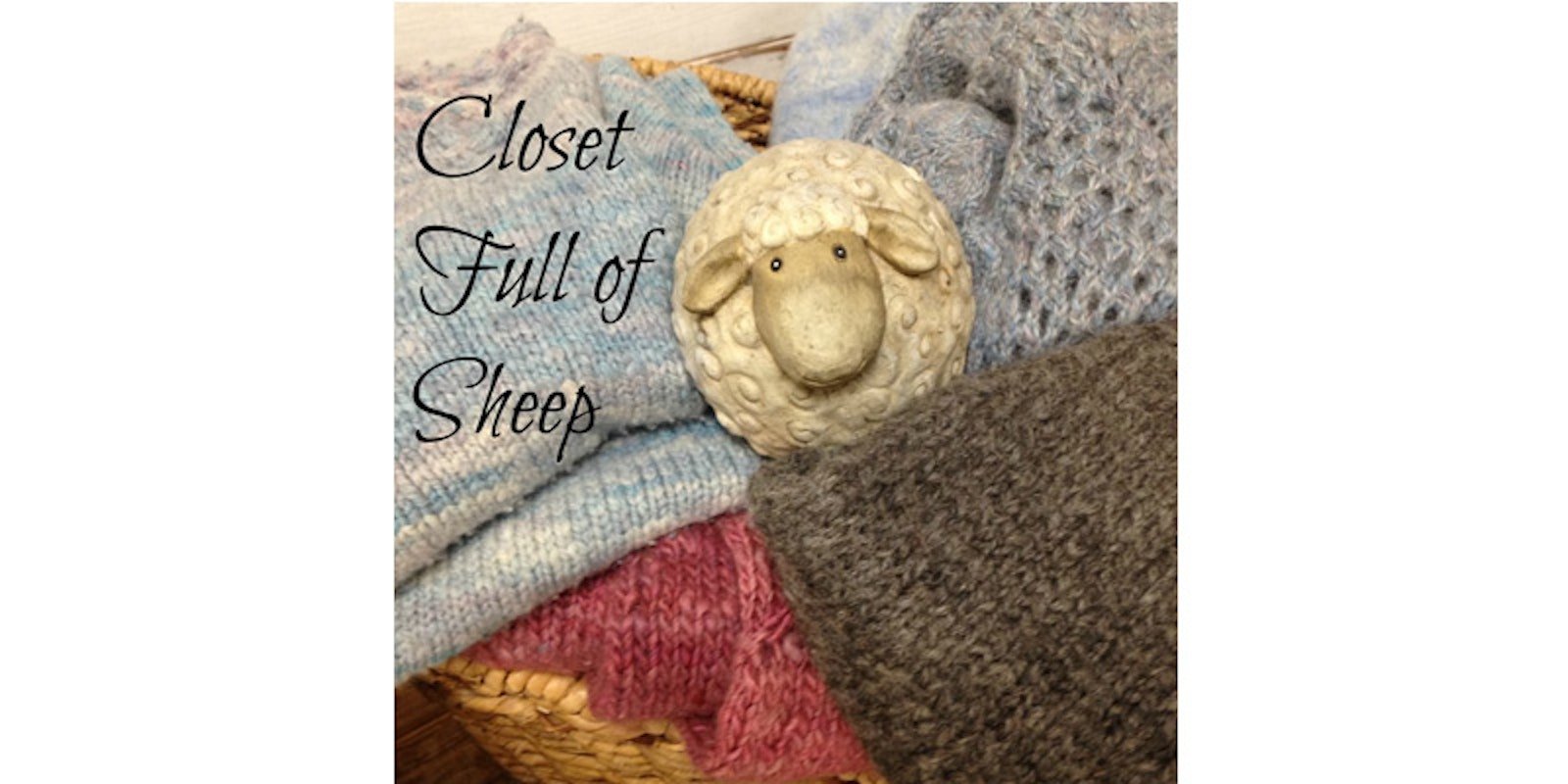Art yarns impress me greatly and appeal to me visually, but they rarely appear in my spinning or knitting queues. I blame my utilitarian nature. After all, my spinning journey began with practical goals in mind: save money, feed my knitting habit, stock my closets with pretty clothes, artistically control my materials, occasionally let go of control. Making yarn for the sheer joy of it satisfies my soul, yet one corner of my brain always plans to do something with that yarn. (Probably because somebody always asks, “What are you going to make with that?” Seriously. While I was winding off the skeins discussed below, a coworker walked over to ask that very question.) Since cabled sweaters dominate my knitting queue, they don’t offer much incentive for handspinning textured yarns. On the flip side, however, I’m trying to schedule more spontaneity into my life, and breathtaking art batts on Etsy somehow find their way into my cart. At long last, I’ve hit upon a simple way to create textured yarns that I’ll actually use.
My simple recipe: Spin singles from rolags, art batt, or handpainted braid without overstressing about consistency. Ply with a fine commercial yarn, either in a contrasting color or a shade that will disappear into the singles. Find a simple knitting pattern that will let this textured yarn shine.
A Finished Project
I first tried this recipe with some white-on-white art batts blended from fluffy, sleek, and sparkly fibers. Once I finished the singles, my heart sank—it looked like my first handspun yarn. Plying it wouldn’t even out the inconsistency. How could I ever knit with this stuff?
Add instant texture by plying with cobweb yarn!
Add instant texture by plying with cobweb yarn!
Then I had a brainstorm. What if I plied it with a cobweb yarn, not much heavier than sewing thread, that had been sitting in my stash for years? That undyed cobweb yarn added texture to the white-on-white handspun singles. The resulting yarn now looked planned. That wasn’t bad spinning—that was art! Plus, I used up that old cobweb yarn! Kristin Omdahl’s Nerina Ruched and Ruffled Scarf from A Knitting Wrapsody would show off the textures and shades of white beautifully. Though I should have used smaller needles to help the ruffles and welts hold their shape, I like the finished scarf.
Projects in Progress
Spinzilla 2015 encouraged me to tweak my textured-yarn recipe. During that glorious week, I spun singles as though my life depended on hitting a certain yardage. Then, once it was over and the nerve endings in my fingers, feet, and butt stopped tingling, those full bobbins cried out for plying. (These days, I almost always ply to help the yarn’s durability.) I wanted to keep the colors pure, since I’d used brilliantly colored preparations: a blend of hand-dyed merino and silk in deep greens and blues from Lambspun in Fort Collins; a SweetGeorgia handpainted Panda braid of merino, bamboo, and nylon in rose and green; and a Yarnshine Fiber Arts set of black and white rolags in merino, silk, bamboo, and Firestar.
" class="wp-image-385659 size-full" height="500" src="https://longthreadmedia.nyc3.cdn.digitaloceanspaces.com/spinoff/2_skeins.jpg" width="500"/>My practical art yarns.
This time, I plied with a black yarn to make the colors pop. Again, my stash came to the rescue, coughing up a cone of very fine silk yarn left over from weaving days. Again, that ply of fine commercial yarn added texture and strength without additional bulk: the finished yarns measure about 12 wpi for the green, 15 wpi for the rose and green, and 10–12 for the black and white. While my knitted swatches show the colors beautifully, I may use these “art yarns” as weft in handwoven scarves to show off the yarn’s texture as well.
Yarn close-ups and knitted swatches for my black-wrapped “art” yarns.
Yarn close-ups and knitted swatches for my black-wrapped “art” yarns.
Final Thoughts
Have I achieved art yarn? Only in the simplest definition of the term and in the laziest way possible. But it’s art yarn suitable for projects. Plus, I used some old stash! Until I watch the videos listed below and learn how to make real art yarn, my tried-and-true recipe can get the job done. This recipe will also whet my appetite for new adventures in handspinning textured yarns.
—Deb Editor, Love of Knitting
Read more "Closet Full of Sheep"!
How to Build a Giant Yarn Stash for Less (HA!) How to Spin and Knit with Control: Sample, Sample, Sample Dyeing Lessons Running Before You Can Walk in Handspun Socks Textured Knitting Stitches and Handspun Surplice Sweater Handspinning for Lace: Another Pair of Socks How to Pet Your Sheep: Preparing Raw Fleece for Spinning Fiber Preparation for Spinning: Of Washing Machines & Drumcarders How to Spin and Knit with Variegated Yarn Closet Full of WHAT??: Spinning Bamboo & Dyeing Tencel Yarn from Jack’s Back: Spinning Alpaca Yarn Welcome to Fantasy Island: Spinning Exotic Fibers Spinning Handpainted Roving: Color Techniques Wool in the Kitchen: Handpainting Yarn with Food Coloring Wild & Crazy Dyes: Dyeing Yarn with Food Coloring
Add texture to your colored yarns!

